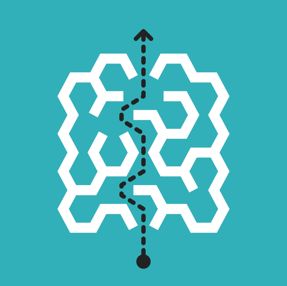5 Questions to Help You Better Align Your Office Workflow
The efficiency of your office workflow dictates the revenue you bring into your practice. It's easy to get comfortable in your routine and ignore opportunities that might be able to improve your workflow, cut down on wait times, or bring in more revenue to your practice. Falling into a comfortable routine is common, and happens in just about every business. Today is the day to step back from your comfort zone and evaluate how efficiently your office workflow is truly performing by asking yourself these five questions.
Build a Stronger Office Workflow by Answering These 5 Questions
Can you do it all from one software system?
One thing that can add significant time to your workflow is having to switch between different applications and systems during a patient visit. If your scheduler is separate from your practice management system and your practice management system is separate from your EHR, and on top of that you have separate windows and tabs for things like patient education, patient recall, ePrescribing, and product ordering you're going to be dealing with additional duplicate data entry, juggling multiple interfaces, log-ins, and clicks.
Purchasing an all-in-one software system that has all of these key tools built in will help you run your entire office, front to back, more effectively.
Have you timed your patient flow?
When was the last time you took out a stopwatch and actually timed a patient from the time they walk into your office until the time they walk out? Detailing the timing of your patient flow will help you better pinpoint bottlenecks and inefficiencies throughout the appointment. Could you implement online pre-appointment forms to decrease wait times at check in? Or, could you use an iPad for entering patient information in the waitroom to decrease data entry for your front desk staff? Are you splitting up tasks and pre-testing with your technician to help avoid bottlenecks of patients waiting on the OD? Use this patient flow template to evaluate where your patients are spending most of their time.
How do you manage your patient hand offs?
Communicating amongst you team to manage efficient patient hand offs is an important part of your workflow, and the patient experience. Typically the trickiest hand off is from the OD to optician at the end of the exam. Depending on your office layout and staff members on hand, a few different options could work best. Whether you communicate through an instant messaging service online, a paging system, or a lighting system in the office there are a variety of strategies to try and improve these important moments in the workflow. Read more about improving your handoffs in this post.
Are you using automation to decrease your workload?
Automation within your software system can help decrease the workload in all areas of your practice. A practice management system that is built with and talks with your EHR system will likely pre-populate fields throughout a patient visit, decreasing duplicate data entry, and uses clinical decision support to help diagnose and treat patients. Other automated features like code verification help you code correctly from the exam, or automated patient recall messages that help bring patients back into your office, and keeps your staff off the phone, are two more ways that auomation helps speed up your workflow.
Does your workflow encourage patient engagement?
Increased patient engagement throughout the appointment is likely going to increase patient satisfaction, and will also decrease the amount of questions and call backs that come in from patients after their appointment. Being able to use a tablet in the exam lane to easily share educational materials, all from within the EHR, right there with the patient will help them better absorb and understand their diagnosis and treatments. It will likely boost the doctor-patient relationship and help them retain information after they leave your office.
Make more improvements to your workflow with our eBook, Optimizing Your Workflow with Optometry Software.

